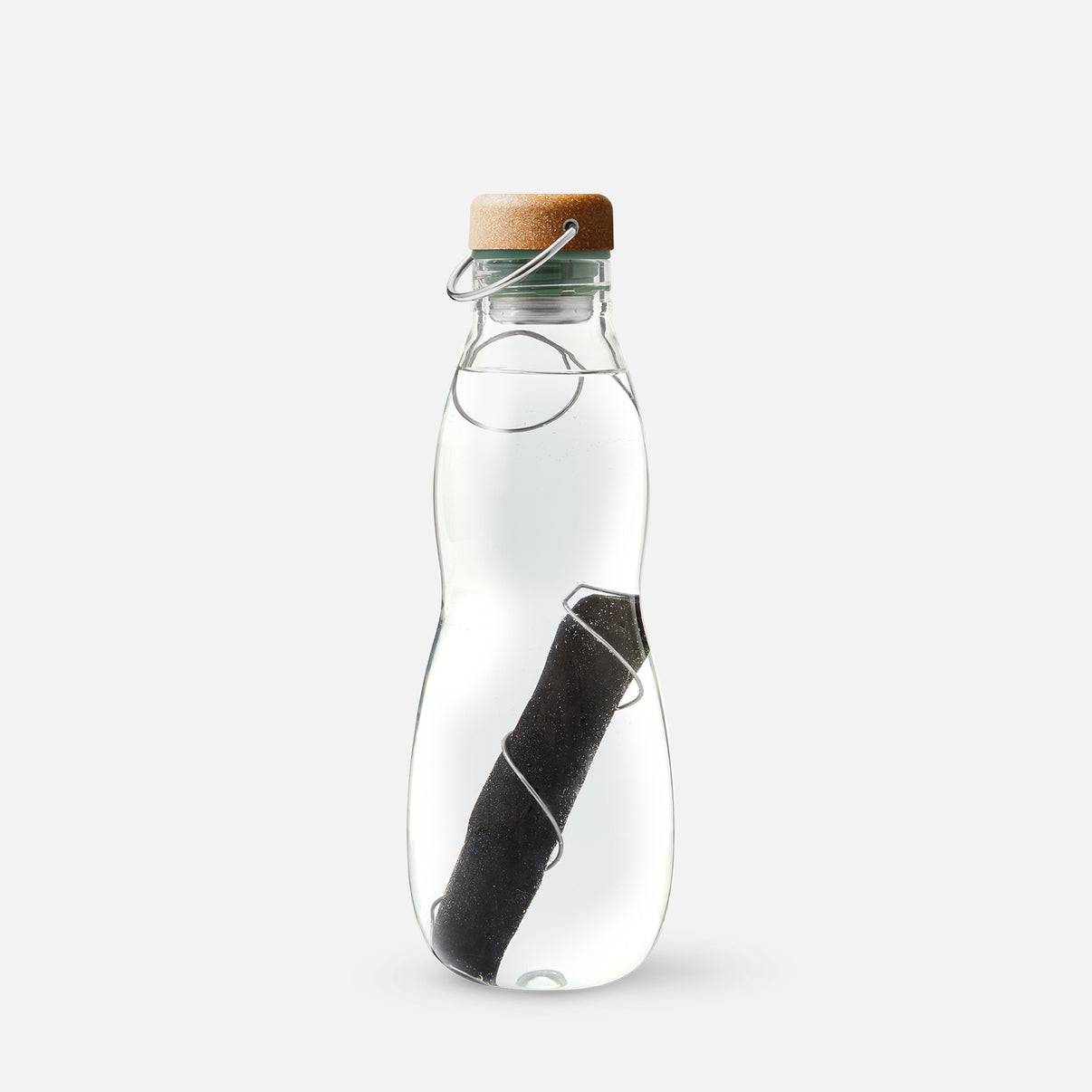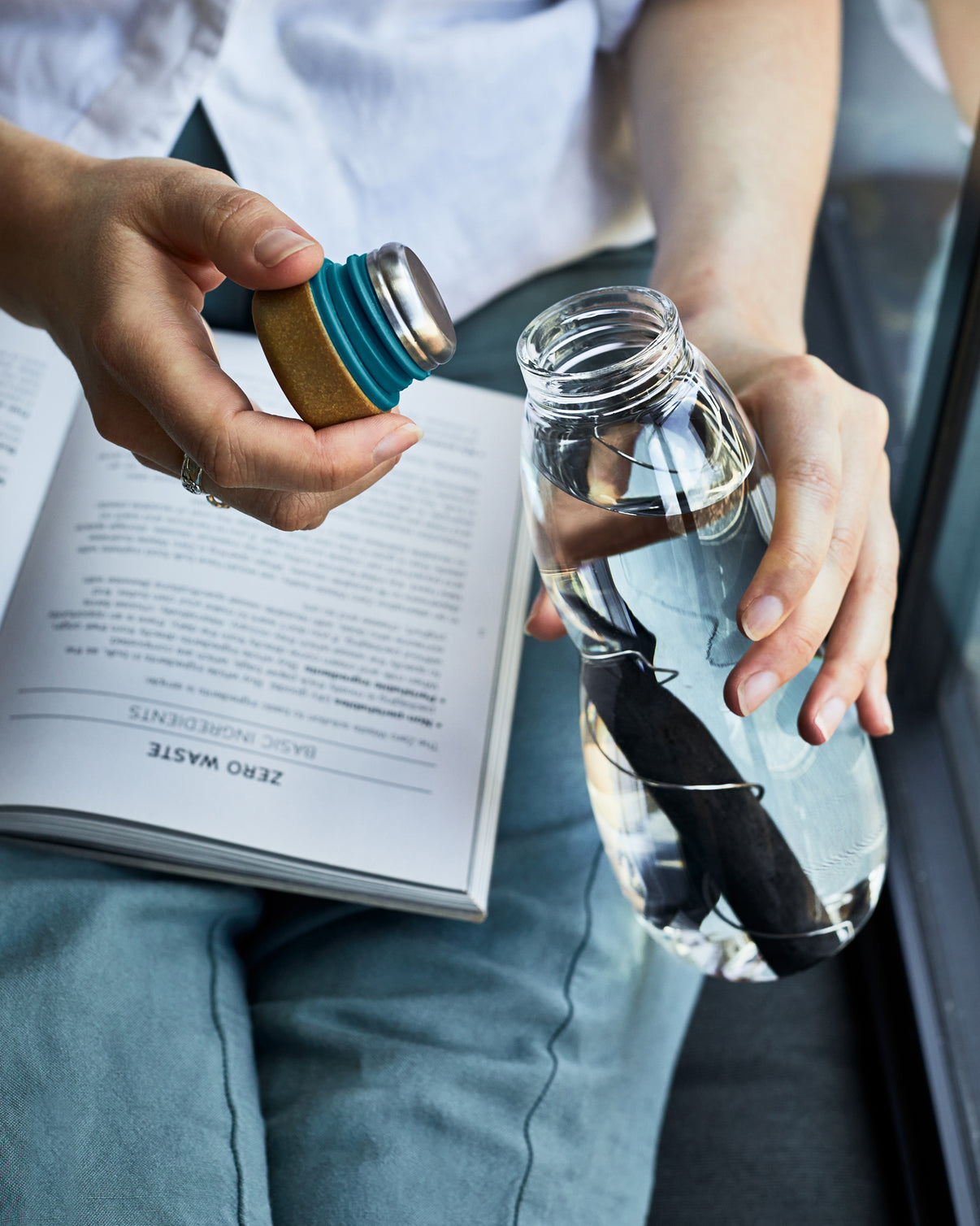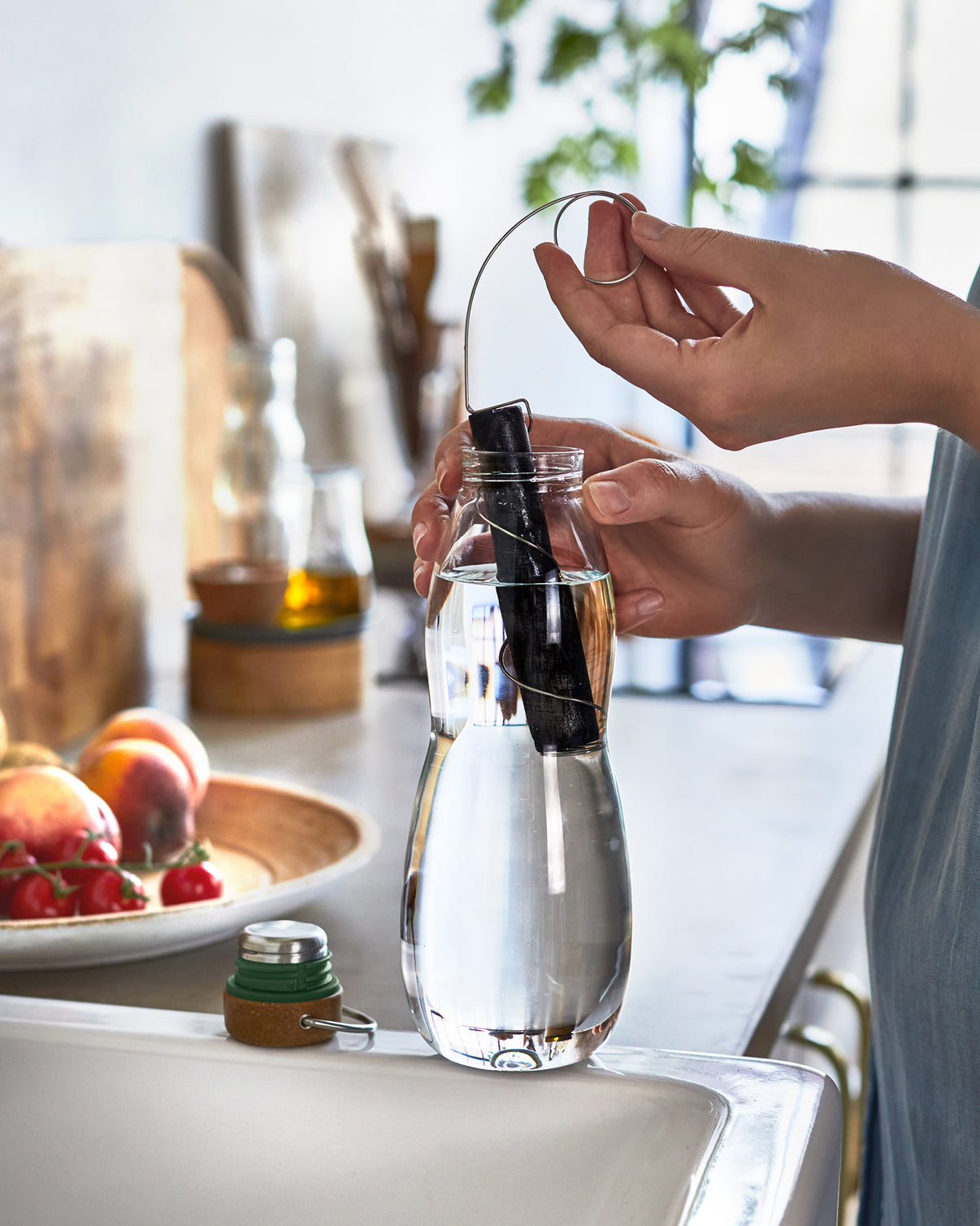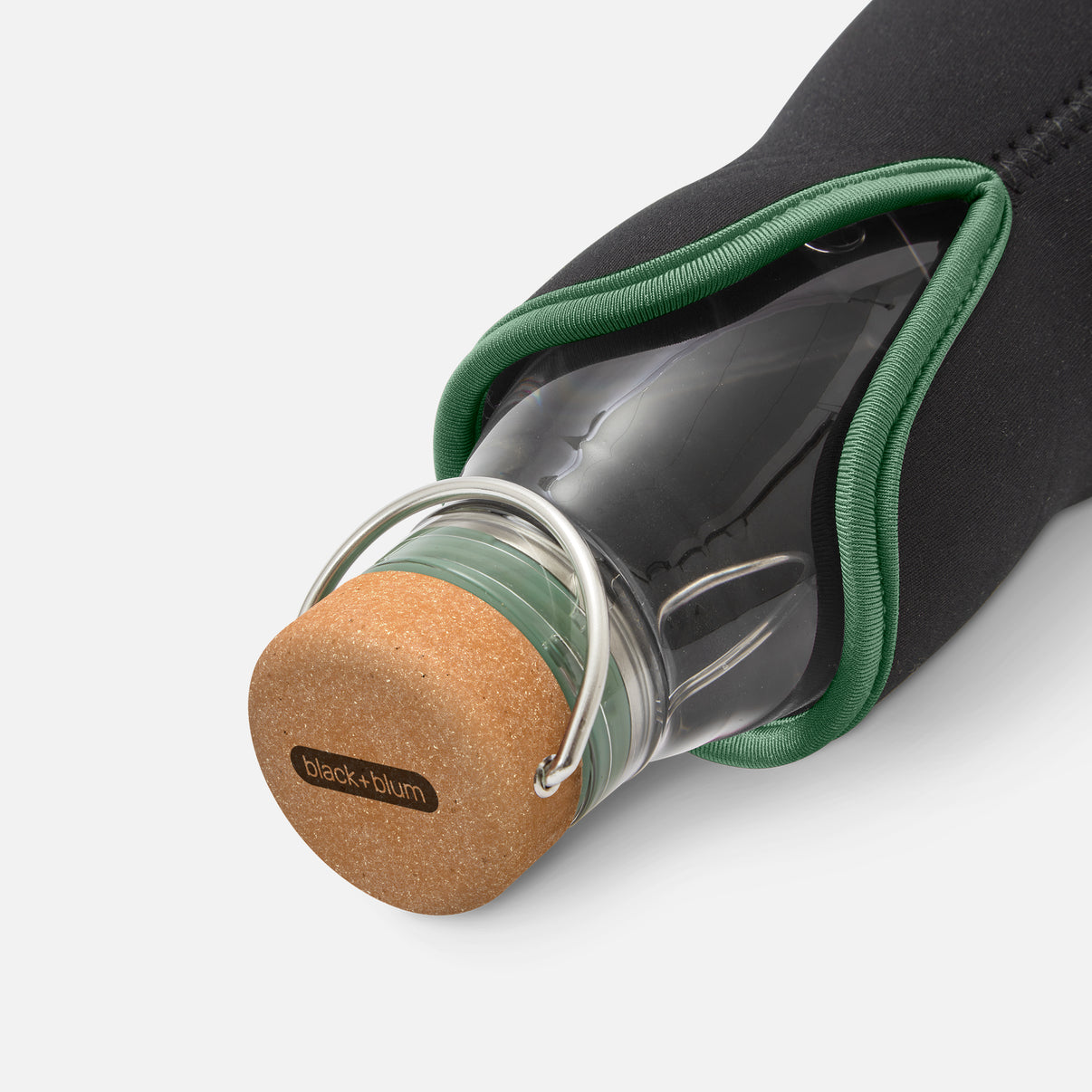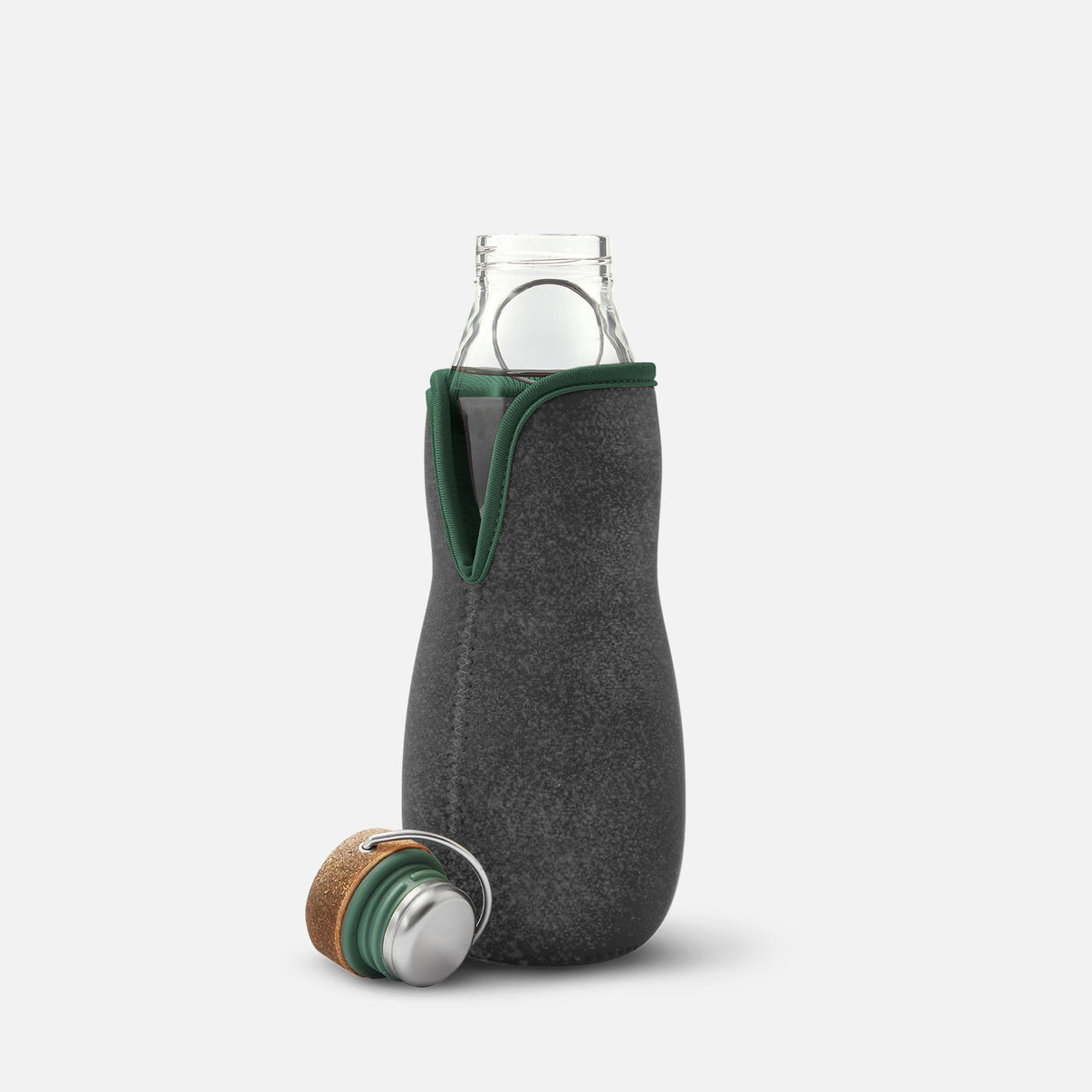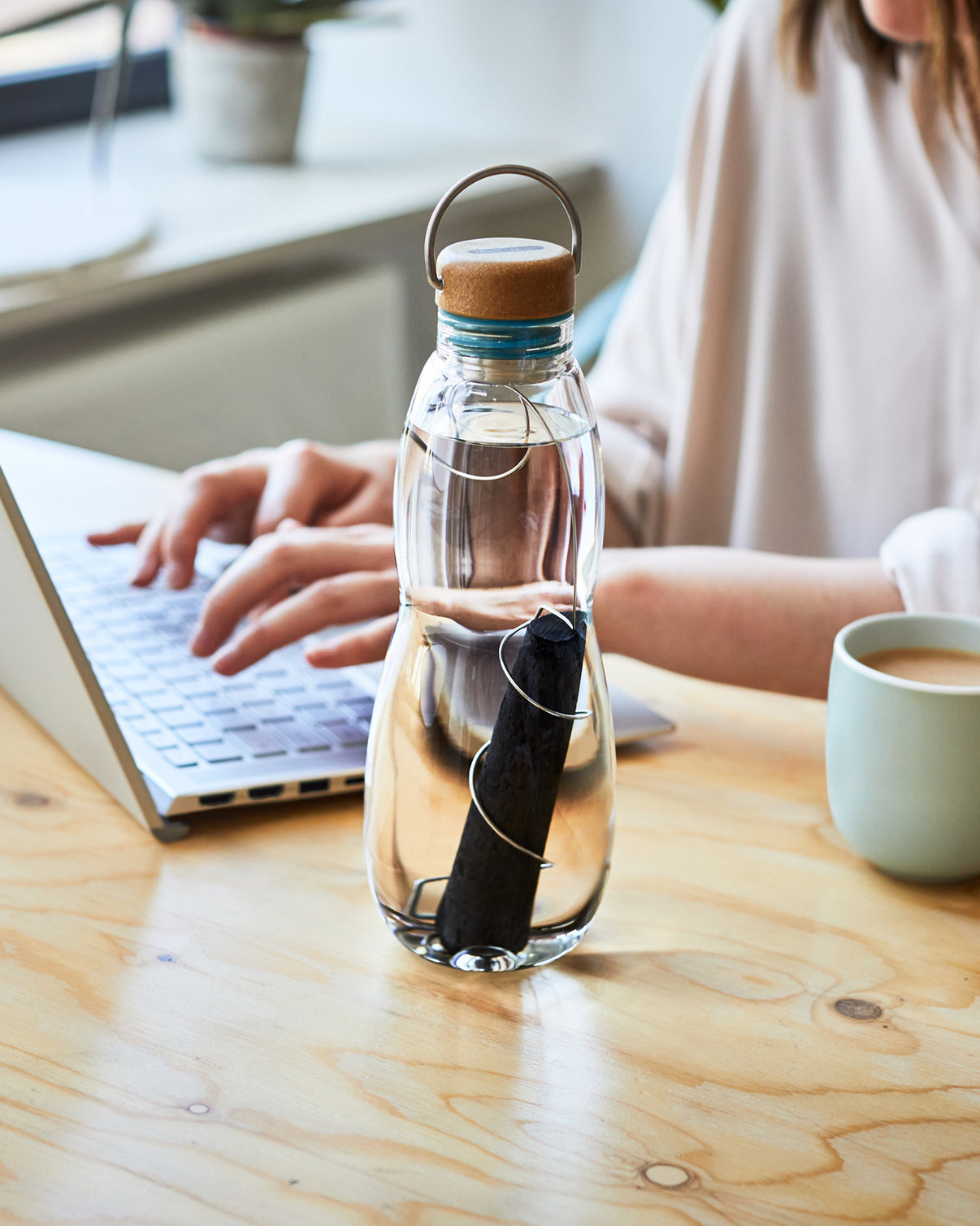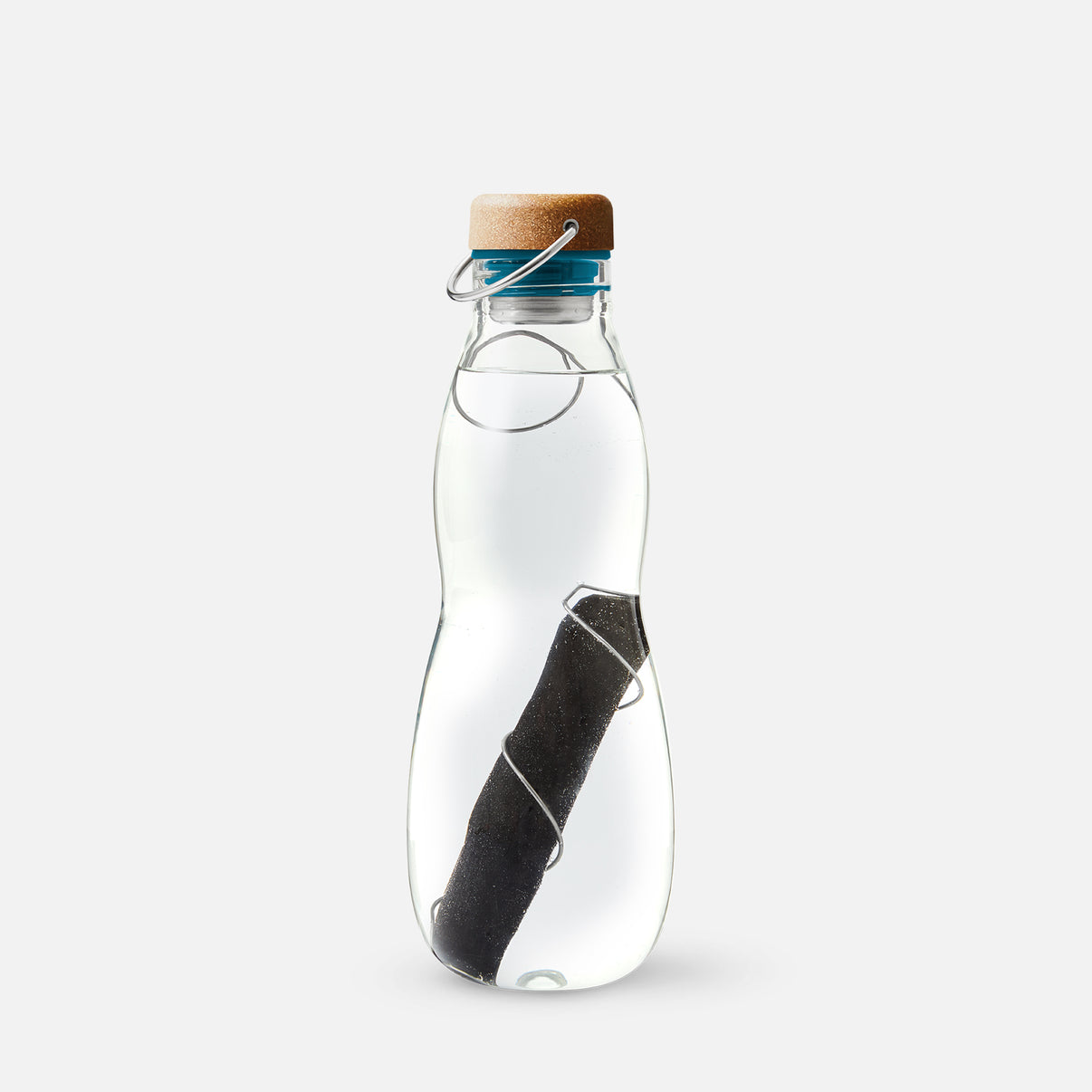EAU GOOD GLASS
EAU GOOD GLASS
Designed to give you a great drinking experience and to help encourage you to drink your tap water
Couldn't load pickup availability
Description
Description
- Removes Chlorine
- Adds Minerals
- Natural Water Filter lasts for 6 months
- 100% leak proof
- Includes locking coil & protective neoprene sleeve
- BPA Free
Specification
Specification
- EGO-EGG010(Olive), EGO-EGG005 (Ocean)
- It makes tap water taste great!
- Hand-blown glass, wood fibre + polypropylene lid with silicone (BPA Free) seal, premium stainless steel 304 (18/8)
- Includes a recycled polyester sleeve for bottle protection and insulation
- Includes stainless steel coil
- Includes x1 binchotan active charcoal filter (6 months life)
- Automatic email updates for when to boil and replace charcoal
- W 9cm H 24cm
- 650 ml
- Weight: 315g
FAQs
FAQs
What is the history of Binchotan charcoal?
Binchotan charcoal, which is often referred to as ‘white charcoal’, has a rich history, although it’s origins are not totally clear. It was thought to have been introduced to Japan by a scholar called Kukai, and a monk, about 1,200 years ago. It wasn’t until the 17th century that it became popular, thanks to a man named Binchuya Chozaemon.
How is it made?
Making Binchotan charcoal requires a very fast rise in temperature, and then rapid cooling, which leaves a hard and smooth surface. If you tap it, you’ll hear a clear, metallic sound. The process to do this involves taking sustainably sourced wood, and charring it at a low temperature in a kiln for a long time. Just before it’s finished, the temperature suddenly is increased to about 1000°C until the wood is red hot. A special powder is created from earth, ash and sand, and this is used to quickly cover the charcoal once it’s removed from the kiln. This process is what gives the charcoal a white hue (which is why it’s sometimes referred to as ‘white charcoal’).
How does it work?
It has a very porous surface with tiny holes (or cavities) throughout the material. These tiny holes attract contaminants like chlorine and hold them to the surface of the charcoal, and therefore away from the water you drink. It also releases minerals like magnesium and iron into the water.
How much water can each charcoal filter?
One stick of Binchotan charcoal can filter about 1.1L of water, if used every day for 3 months. Just scale up or down depending on the volume of water you’d like to filter.
How long will it last?
About 3 months if you use it every day with our ‘Eau Good’ range. You can then boil it for 10 minutes to ‘recharge’ it, make sure you leave to dry in the sunlight. This recharging will make your charcoal last another 3 months.
What other uses does the binchotan have?
Binchotan has lots of secondary uses after it’s finished as a water filter: it adds nutrients to the soil of houseplants (simply break it up and add to the pot), you can use it to deodorise a laundry basket, cat litter or shoes, it even can absorb moisture from the air, acting as a great dehumidifier in your wardrobe.
Do I need to wash my charcoal?
No, it’s ready to use straight out of the packaging.
Can I use my binchotan with flavoured water (fruit infused or tea)?
No, do not use anything to flavour your water with the Binchotan charcoal.
Can I wash my bottle with soap and leave the charcoal in it?
Make sure you remove the charcoal stick before washing your bottle with soap.
Where can I order more charcoal from?
You can buy more charcoal directly from our website, please see the Accessories page.
Is it dangerous if I swallow a bit of charcoal?
No, swallowing small pieces of charcoal will not be harmful. Sometimes small particles or fragments may break off your charcoal stick and float in your water, you can simply rinse these out, but it will not be dangerous if you swallow them.
What’s the best way to clean my bottle?
We recommend washing your bottle with a bottle brush and hot, soapy water regularly. You can also put the bottle in the dishwasher. The lid is not dishwasher safe, but the silicone seal is dishwasher safe and is easy to remove for thorough cleaning.
Share
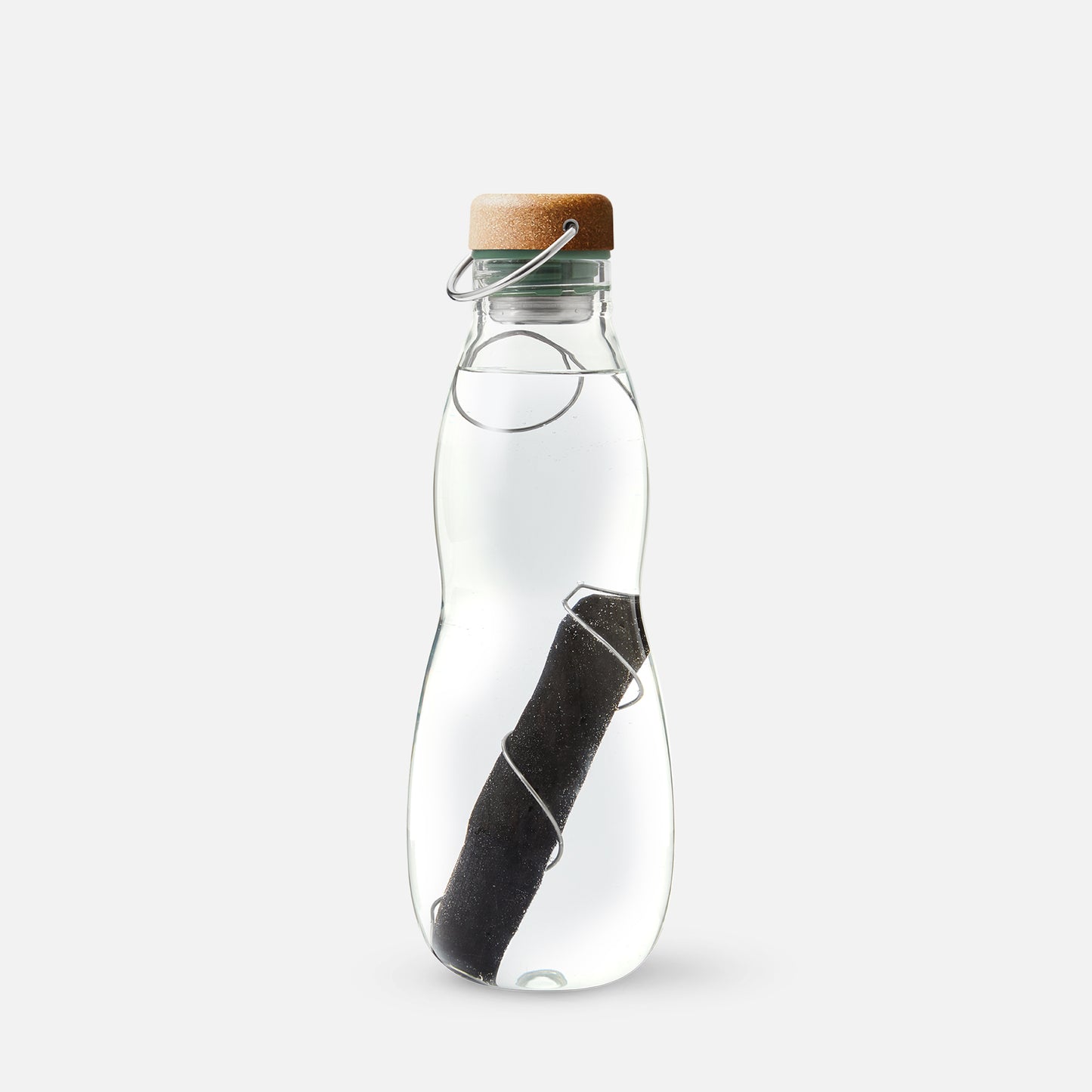
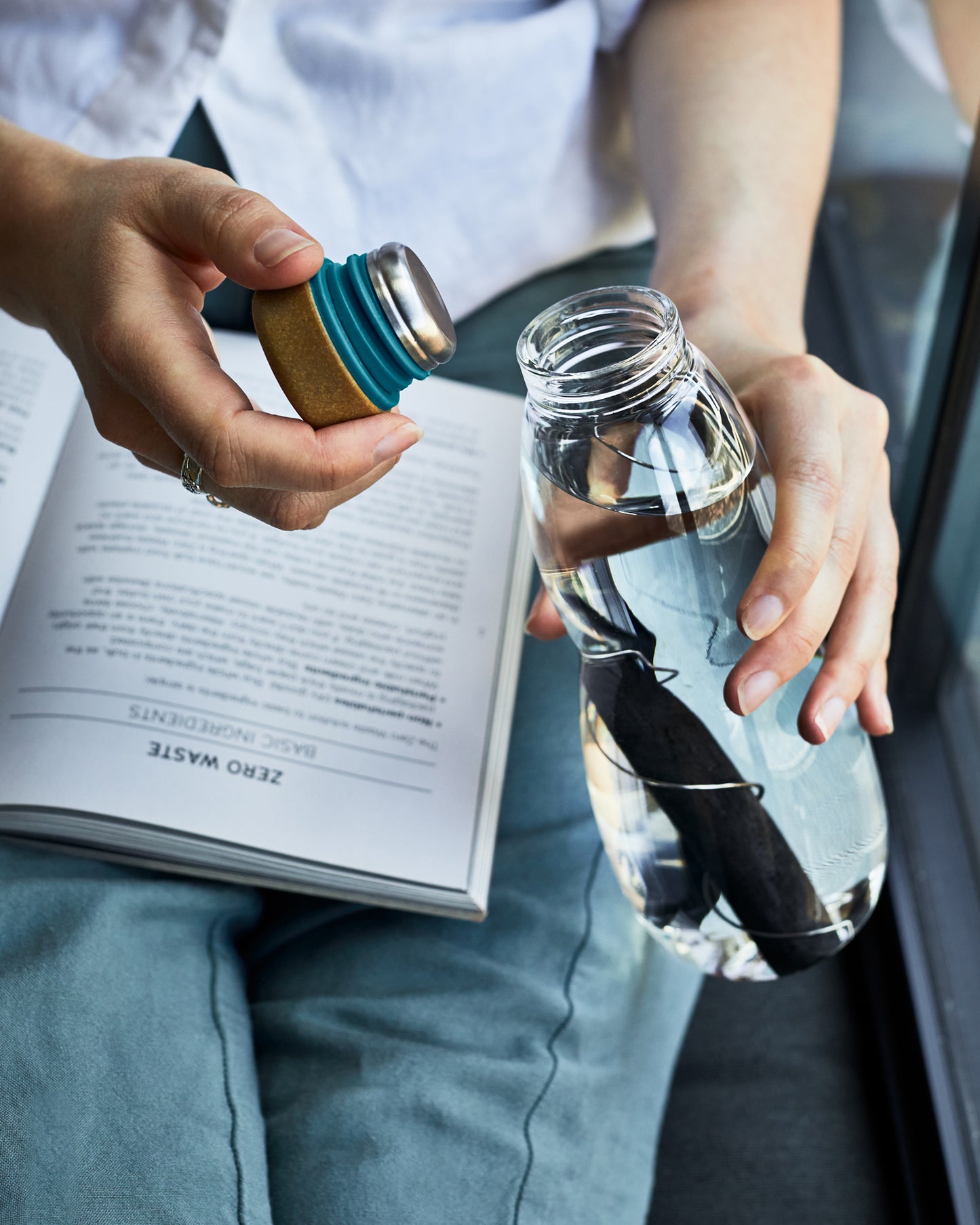
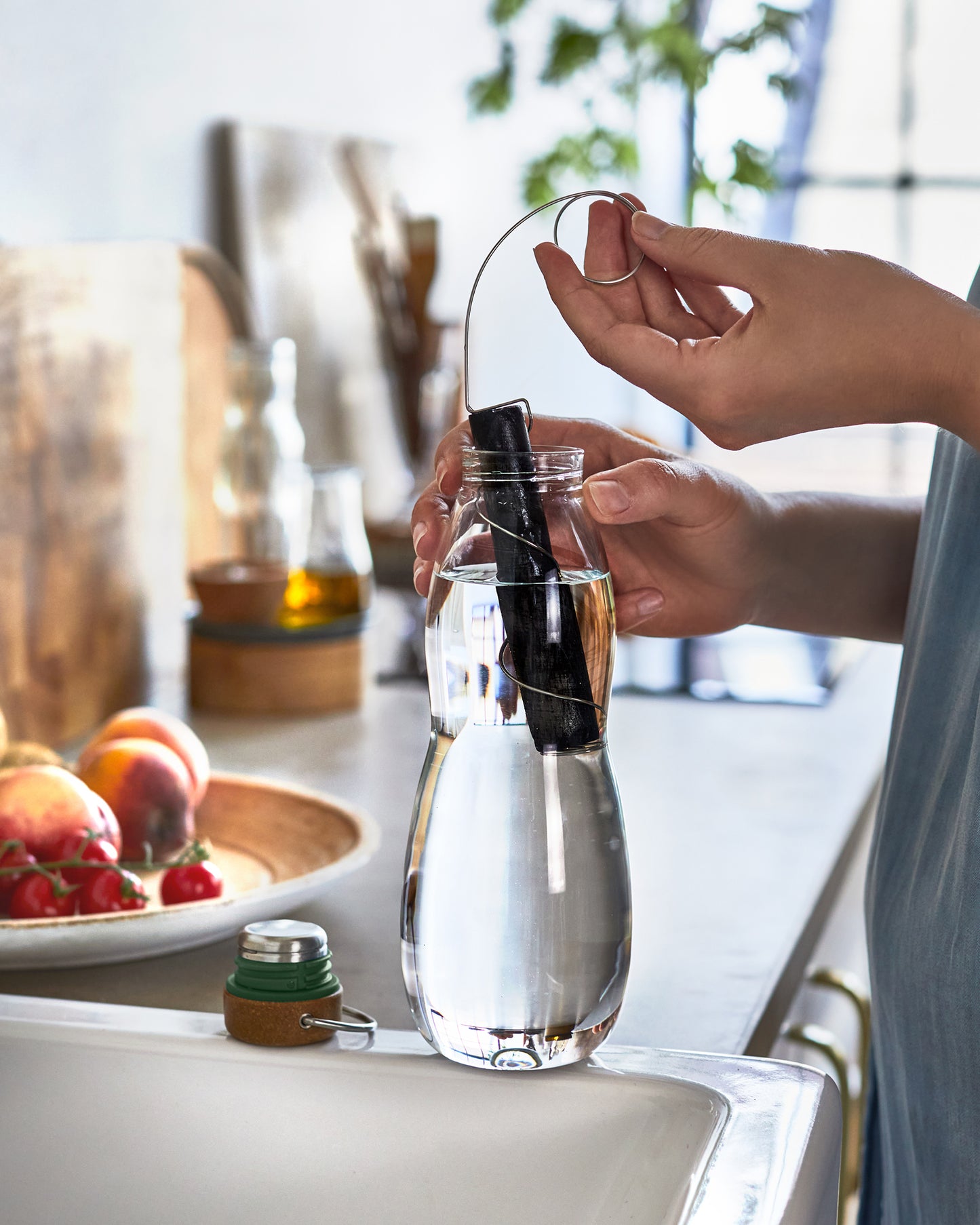
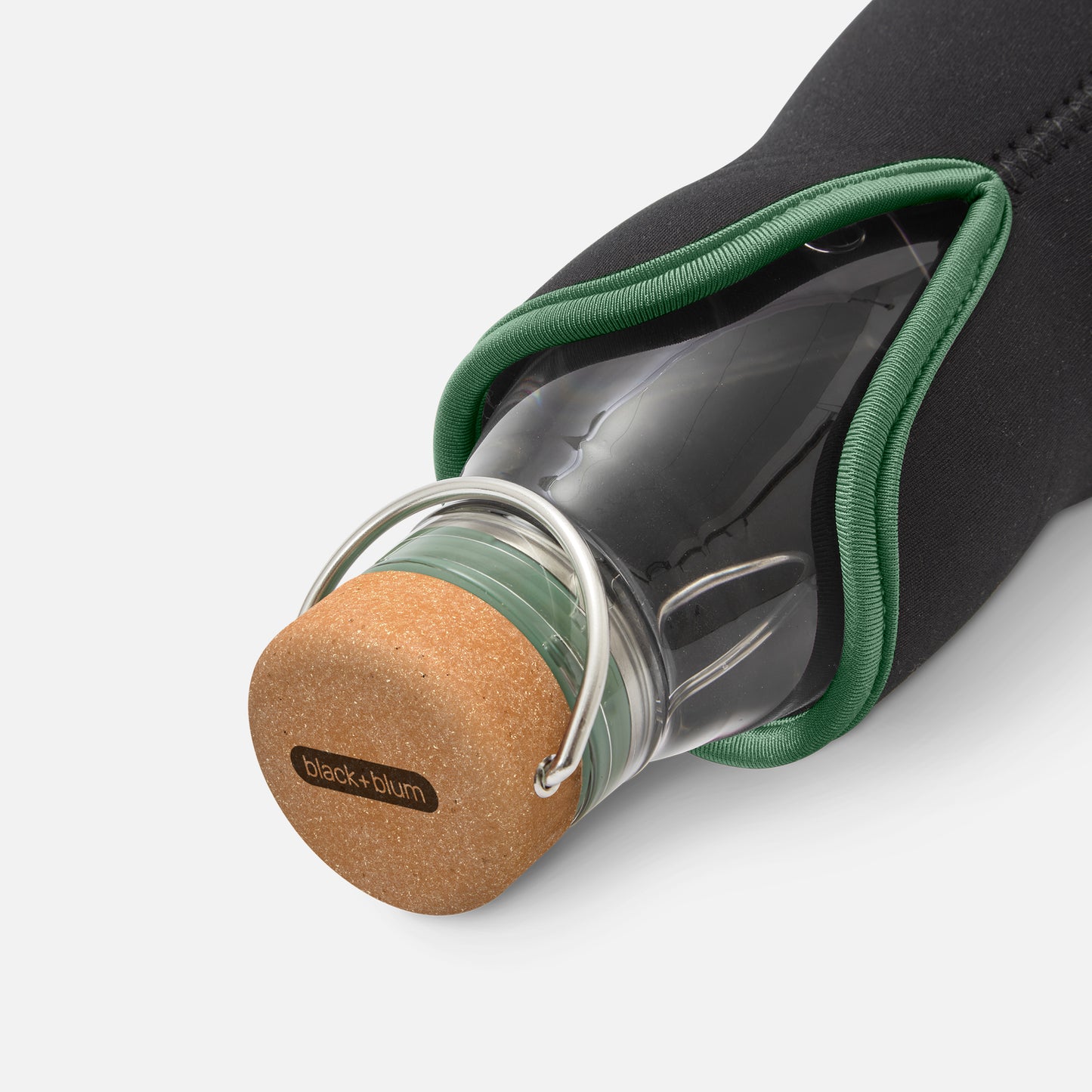
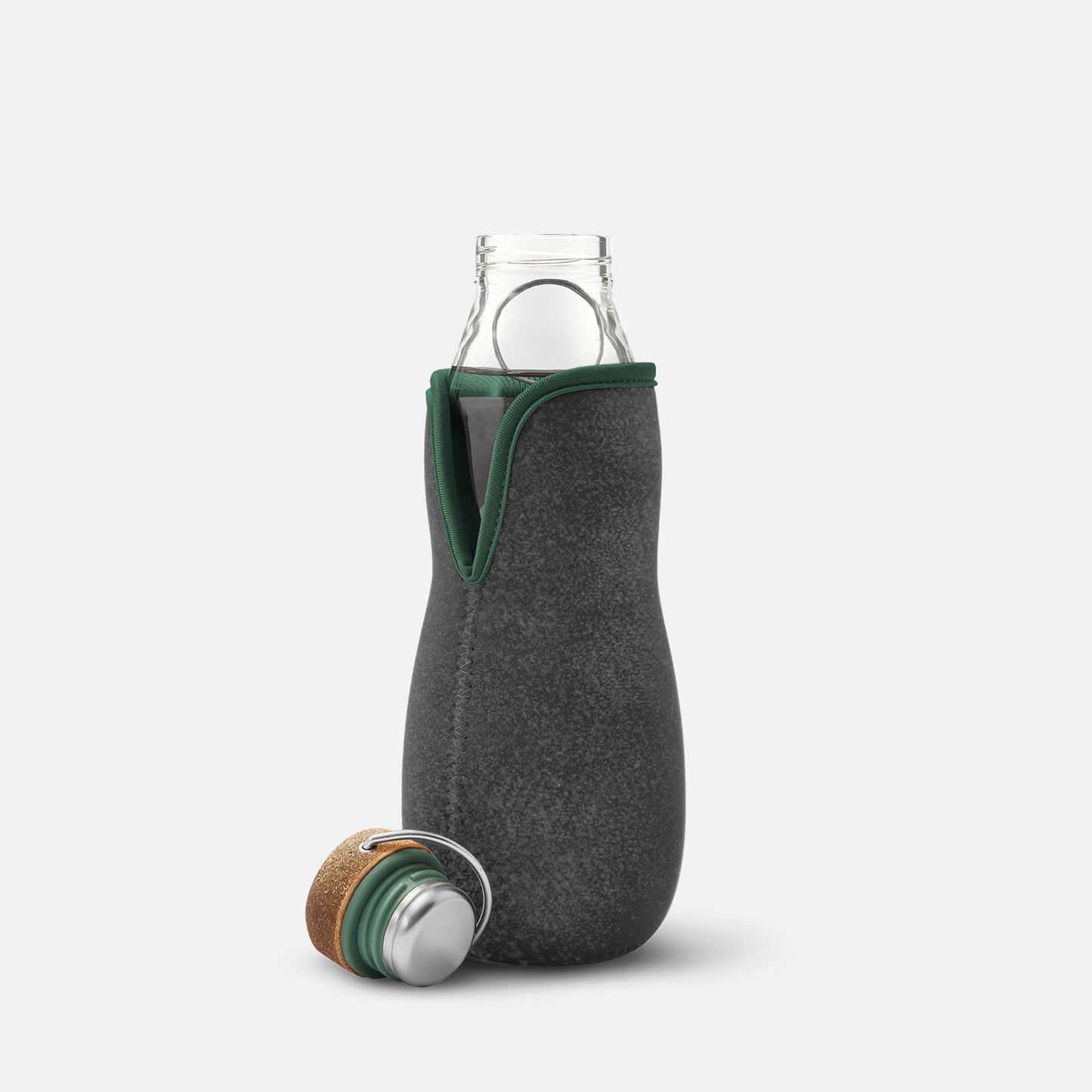
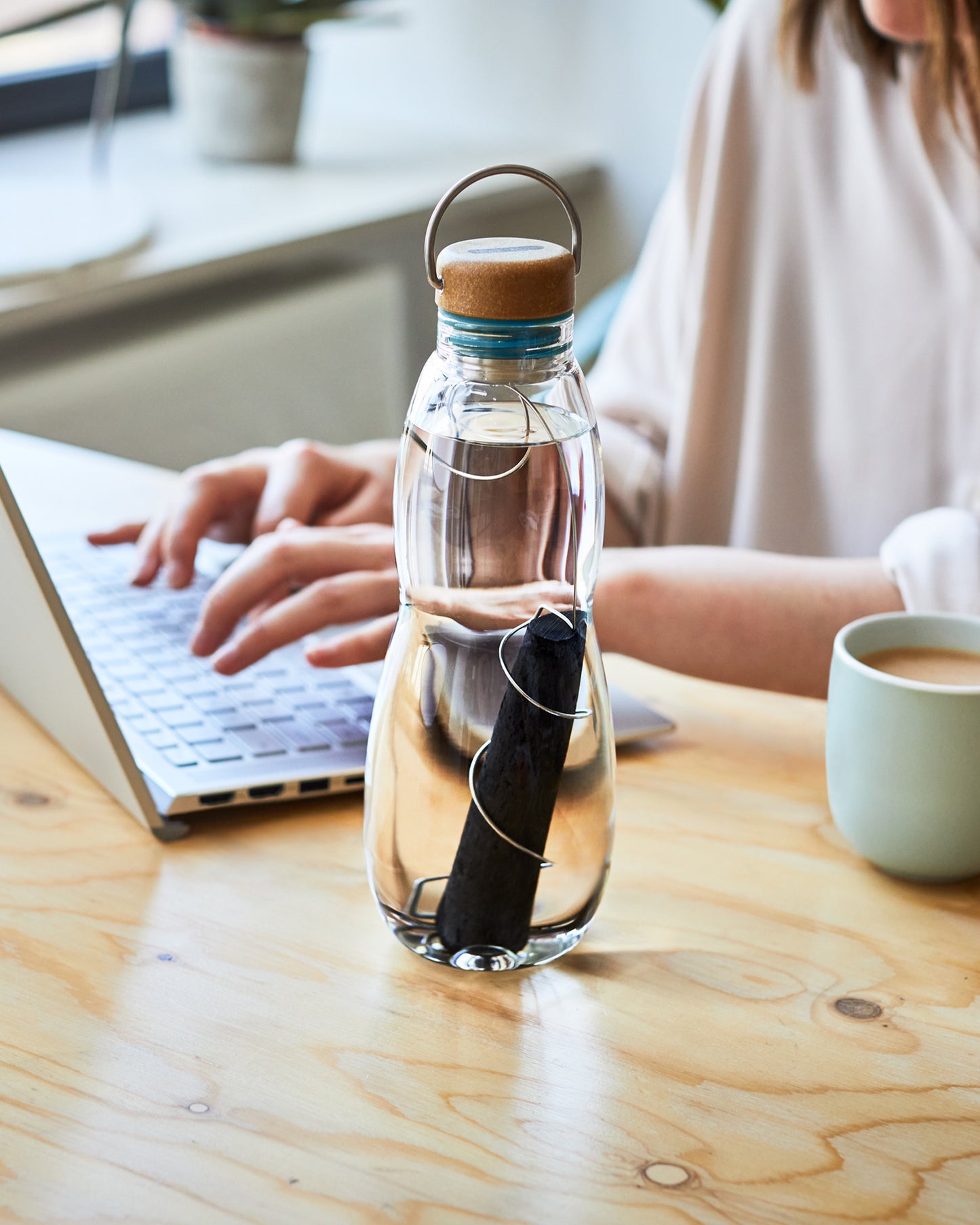
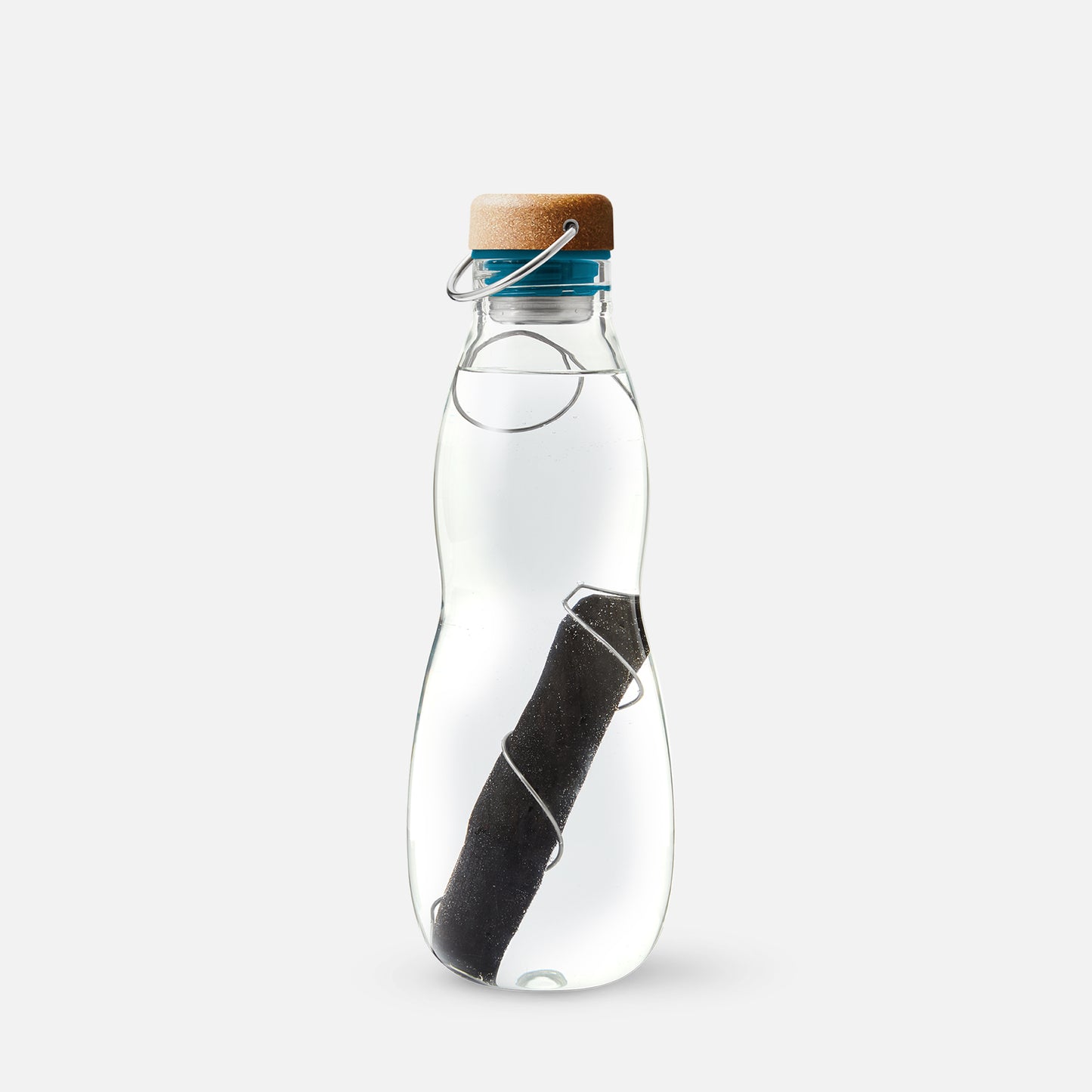
Features

wood-fibre lid & carry loop
The leak proof lid has a polypropylene and wood fibre top and stainless steel loop that makes it easy to carry. The silicone seal is easy to remove for thorough cleaning. The stainless steel cap on the underside of the lid ensures there is no plastic coming into contact with your water.
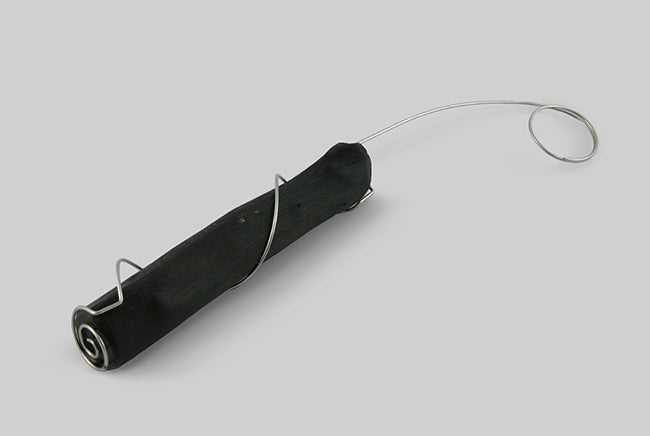
charcoal-locks-in-place
The stainless steel coil ensures the charcoal does not move or rattle inside the bottle, even without water.

eco protective sleeve
The sleeve is made from recycled polyester. It helps protect the glass, insulate the water (keep it cool), makes it easier to grip and stops condensation forming on the outside of the glass.

thread on inside for smooth drinking
The thread is on the inside of the bottle so the outer lip is smooth and gives a better drinking experience. The Borosilicate glass is taste neutral so combined with the charcoal filtration, you get the best tasting water and drinking experience.
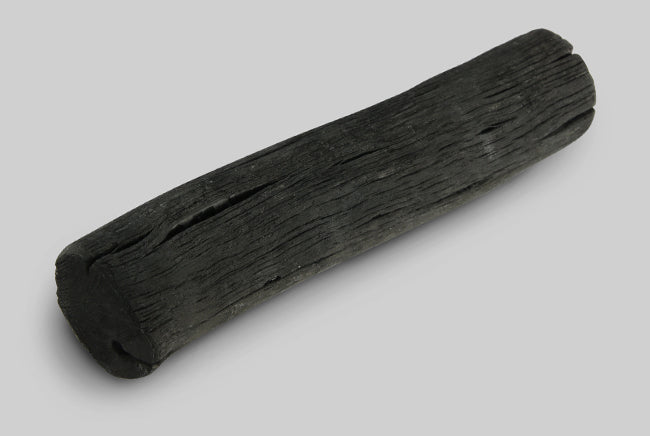
why charcoal for filtering water?
As an active carbon, charcoal works by attracting the negative ions in impurities like chlorine, and binding them to its surface. It has been used in Japan to purify and soften water for centuries.

how do i use it for filtering water?
Our binchotan charcoal can be used immediately - simply remove it from its packaging and place it in any bottle or jug. Once filled with water you’ll notice an improvement in taste after about an hour.

does it ever stop working?
If used daily to filter 1.1L of water, each stick will last about 3 months. You can then “recharge” your charcoal stick by placing it in boiling water for 10 minutes. This process reactivates the charcoal and removes the contaminants that have been building up on its surface and allows it to filter your water for another 3 months.
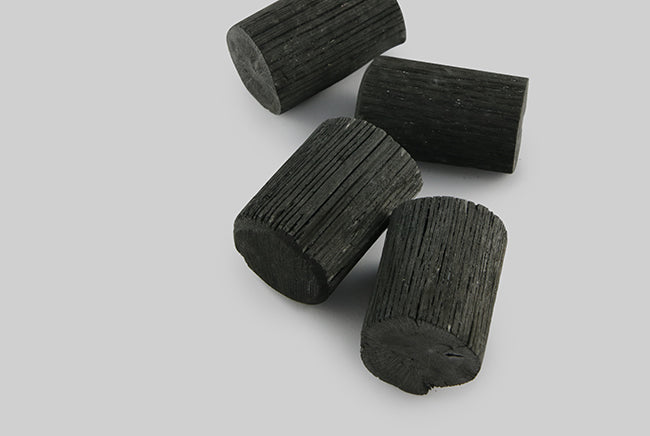
what to do if it breaks?
Your charcoal will still work even when broken. However, if you’d prefer to buy another, you can still use the broken pieces in many different ways. To know more about this, have a look at our blog.
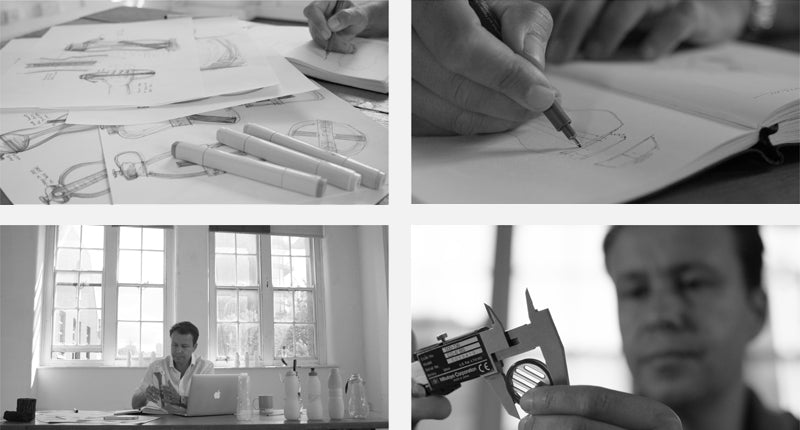
a word from the designer
We wanted to upgrade our glass filter bottle. A threaded lid makes it easier to open and close. It requires skilled glassmakers to hand blow this detail but ensures that the bottle is a pleasure to drink from. The wood fibre lid has the same visual appeal as the original cork design but is harder. The silicone seal is easy to remove (and reapply) for thorough cleaning and the stainless steel cap on the underside ensures a plastic-free contact with your water. One of the biggest improvements was changing the sleeve from neoprene (not environmentally friendly) to a recycled polyester that still protects and insulates the water inside. The visual appeal of the design remains, but the new design is more robust for on-the-go use.

